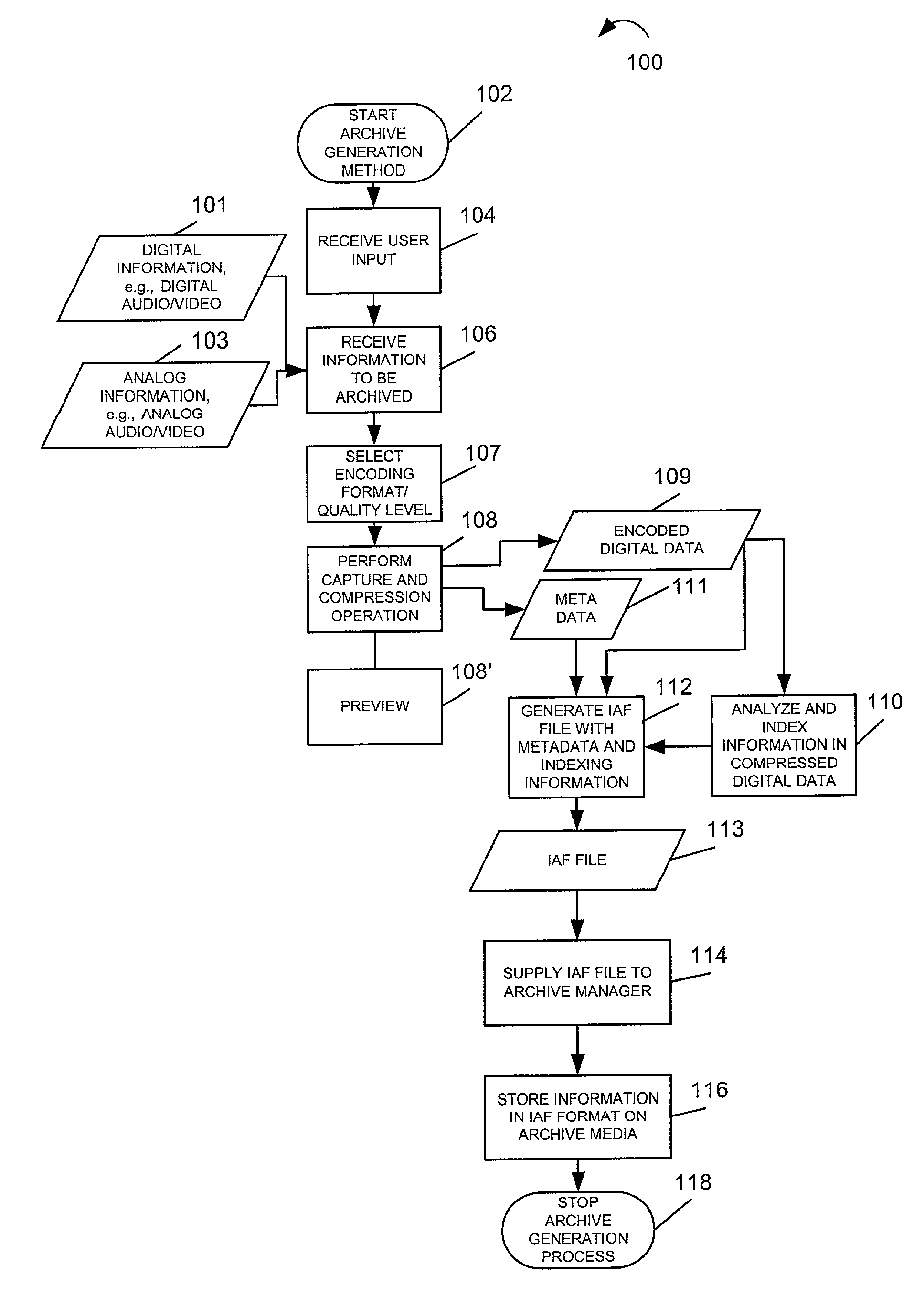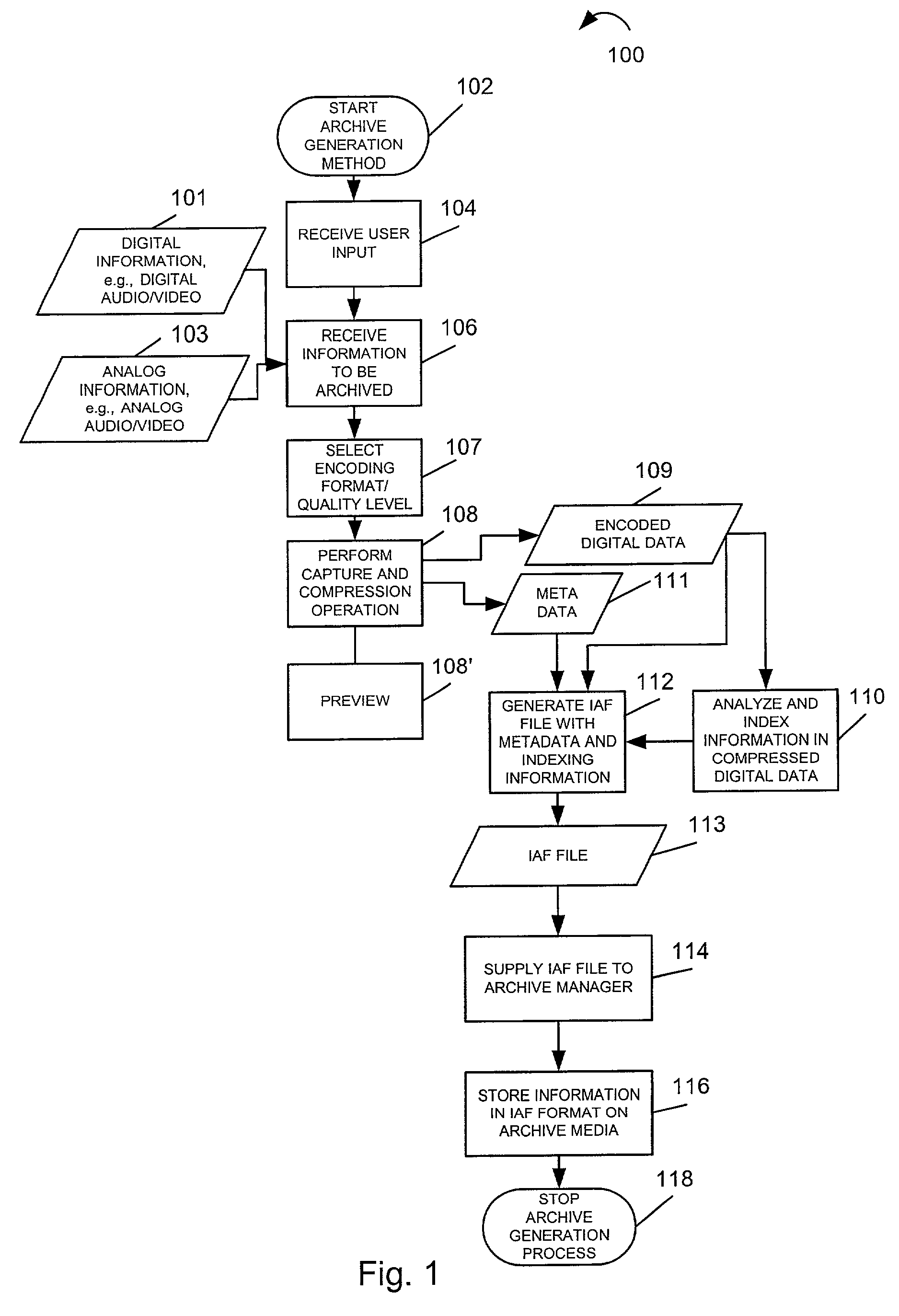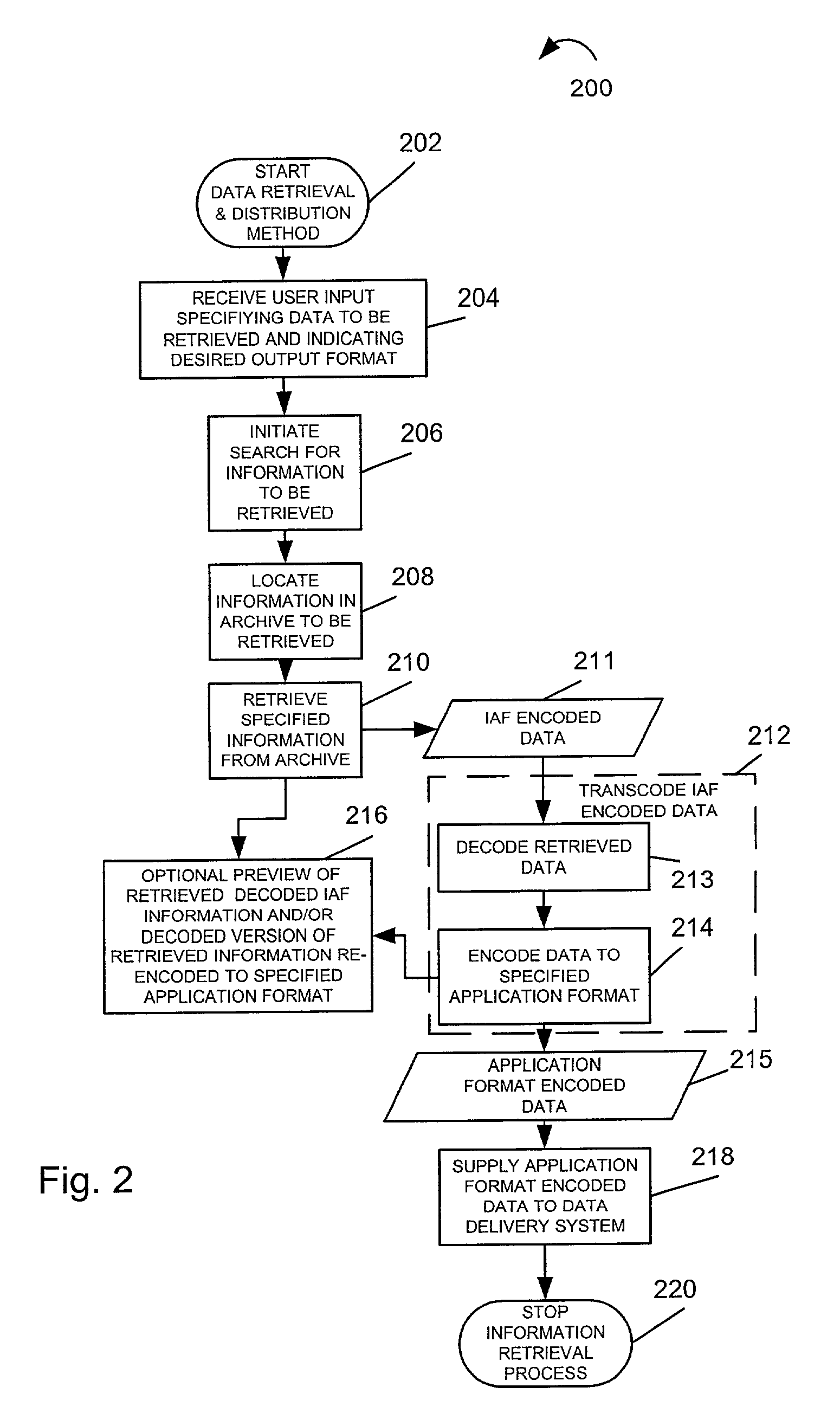Methods and apparatus for archiving, indexing and accessing audio and video data
- Summary
- Abstract
- Description
- Claims
- Application Information
AI Technical Summary
Benefits of technology
Problems solved by technology
Method used
Image
Examples
Embodiment Construction
[0046]As discussed above, the present invention is directed to methods and apparatus for the archiving, storage, retrieval and distribution of audio, video and / or other types of data.
[0047]FIG. 1 is a flow chart 100 illustrating the steps of an archive generation method of the present invention. The method may be implemented using systems such as those illustrated in FIGS. 3 and 9 which will be discussed in detail below.
[0048]The archive generation method begins in step 102 wherein the archive generation process is started. Then in step 104 user input is received from an archive system user. The user input indicates, e.g., one or more application formats to be supported, the minimum output resolution to be supported, the user's desire to minimize loss in audio or image quality, the user's preference for a particular level of data compression and / or user specified data constraints.
[0049]Next, in step 106, the information, e.g., audio and / or video information to be archived is receive...
PUM
 Login to View More
Login to View More Abstract
Description
Claims
Application Information
 Login to View More
Login to View More - R&D
- Intellectual Property
- Life Sciences
- Materials
- Tech Scout
- Unparalleled Data Quality
- Higher Quality Content
- 60% Fewer Hallucinations
Browse by: Latest US Patents, China's latest patents, Technical Efficacy Thesaurus, Application Domain, Technology Topic, Popular Technical Reports.
© 2025 PatSnap. All rights reserved.Legal|Privacy policy|Modern Slavery Act Transparency Statement|Sitemap|About US| Contact US: help@patsnap.com



